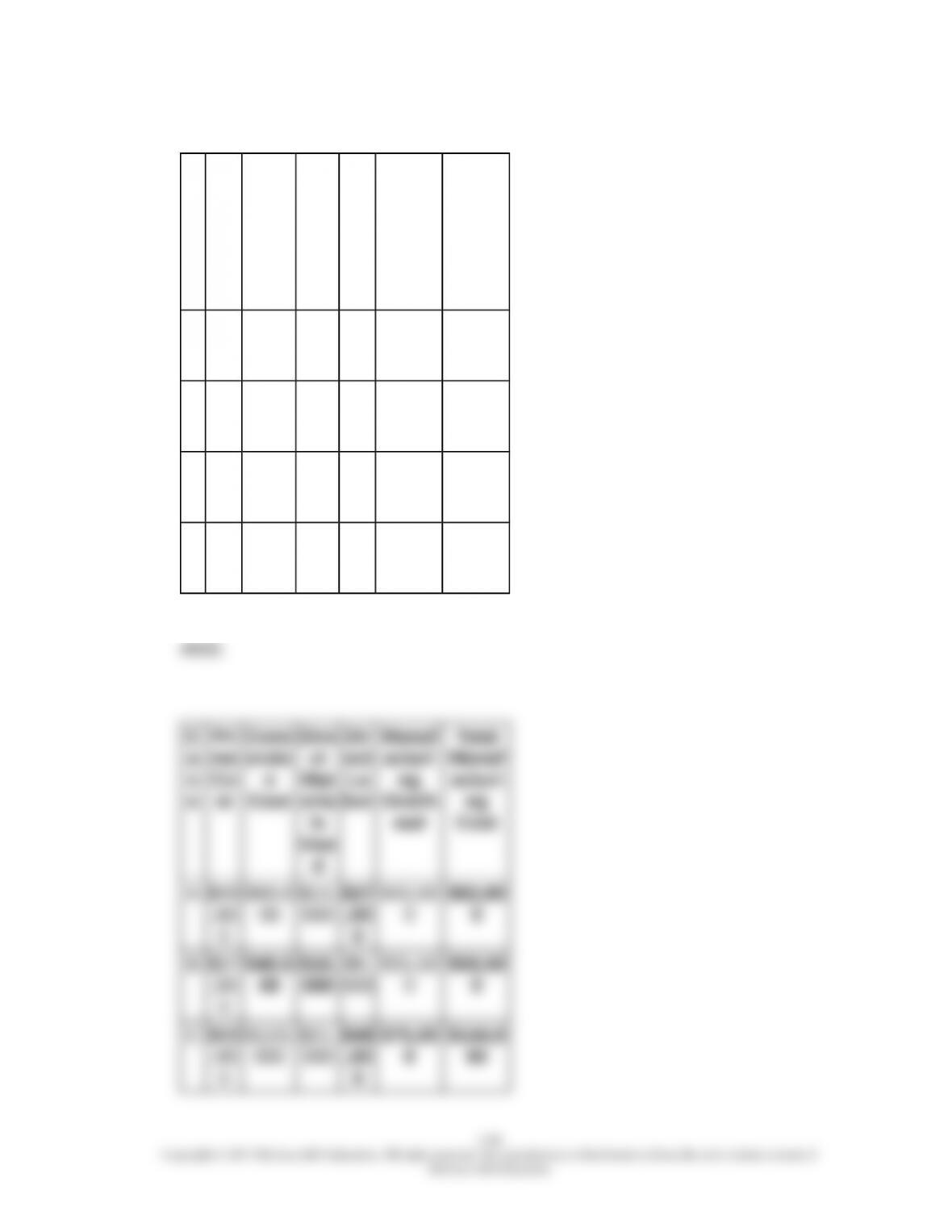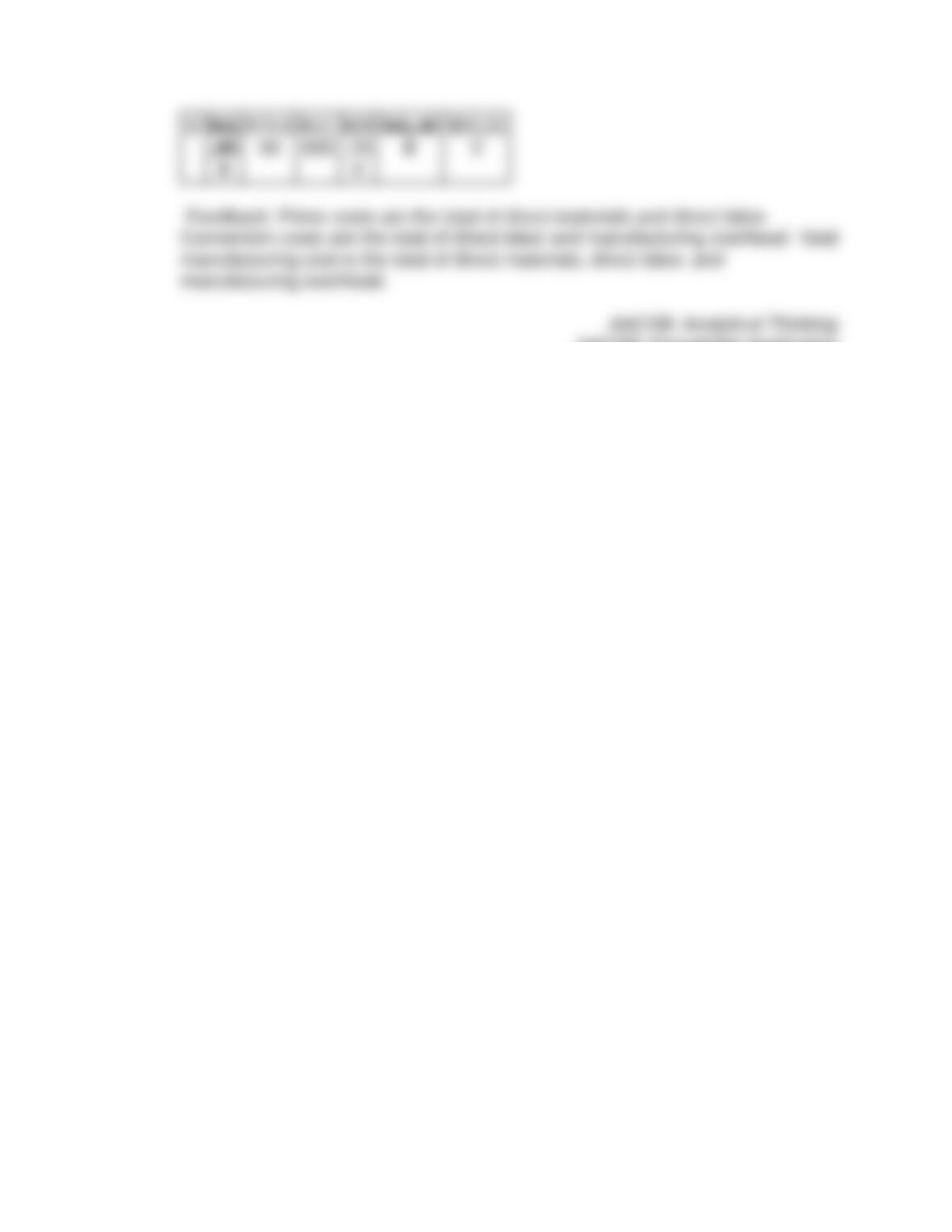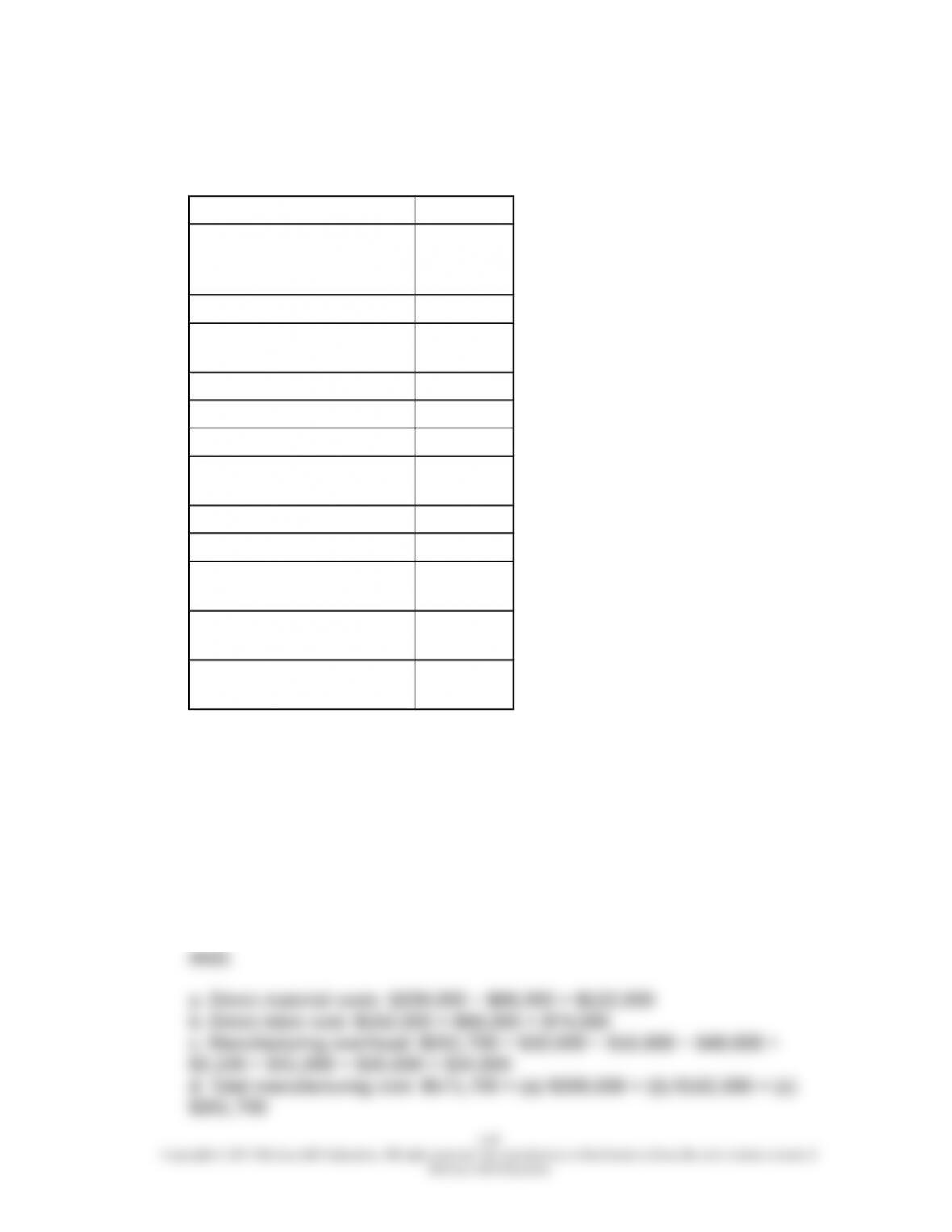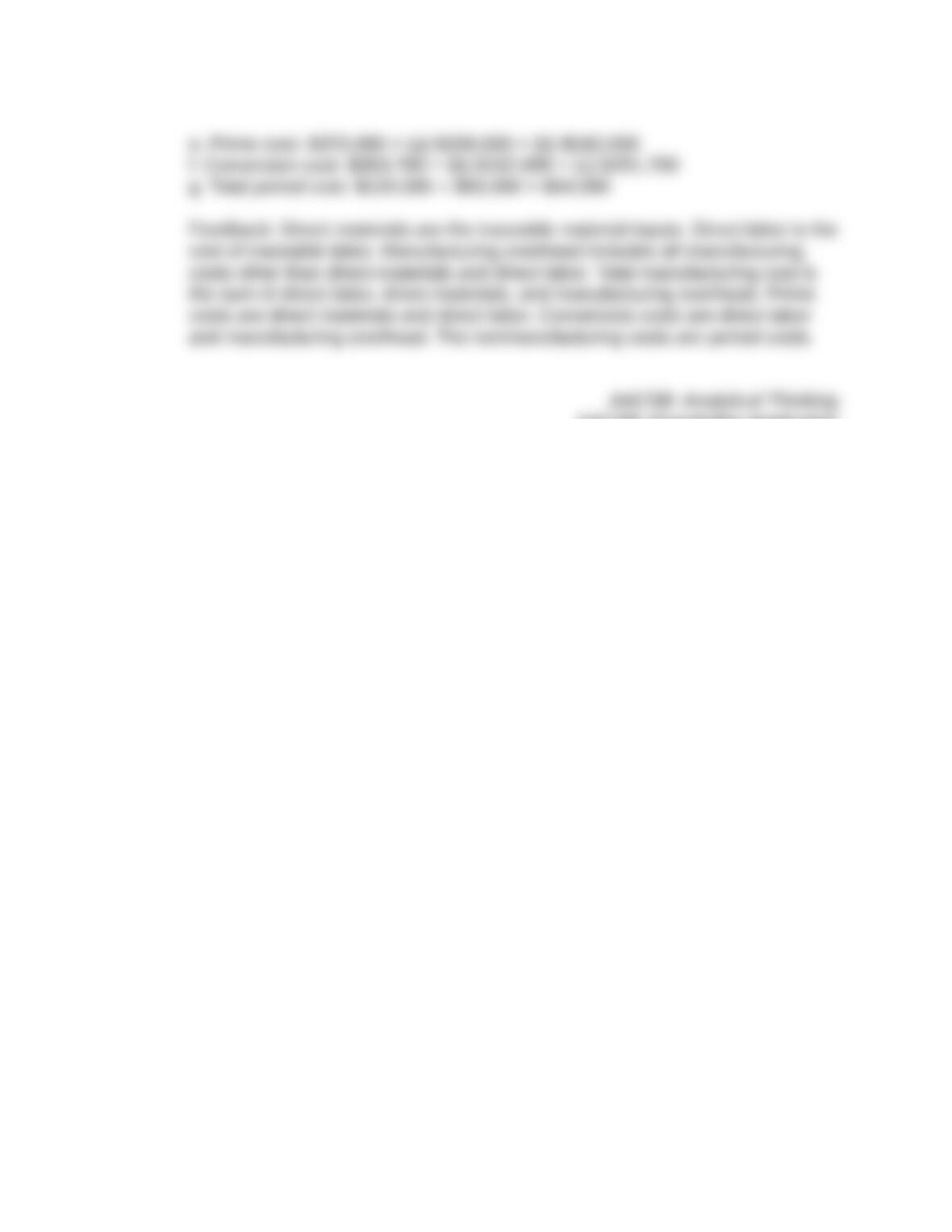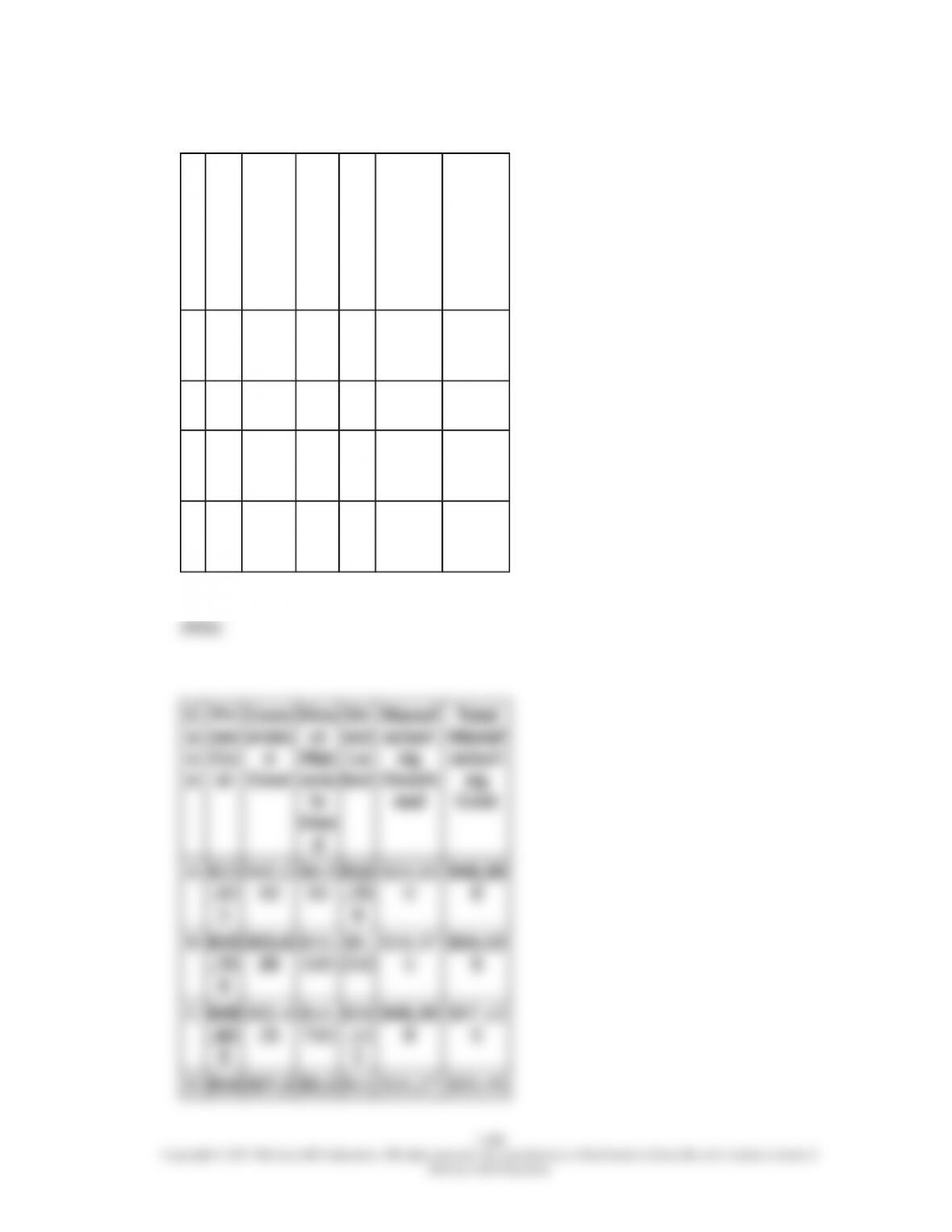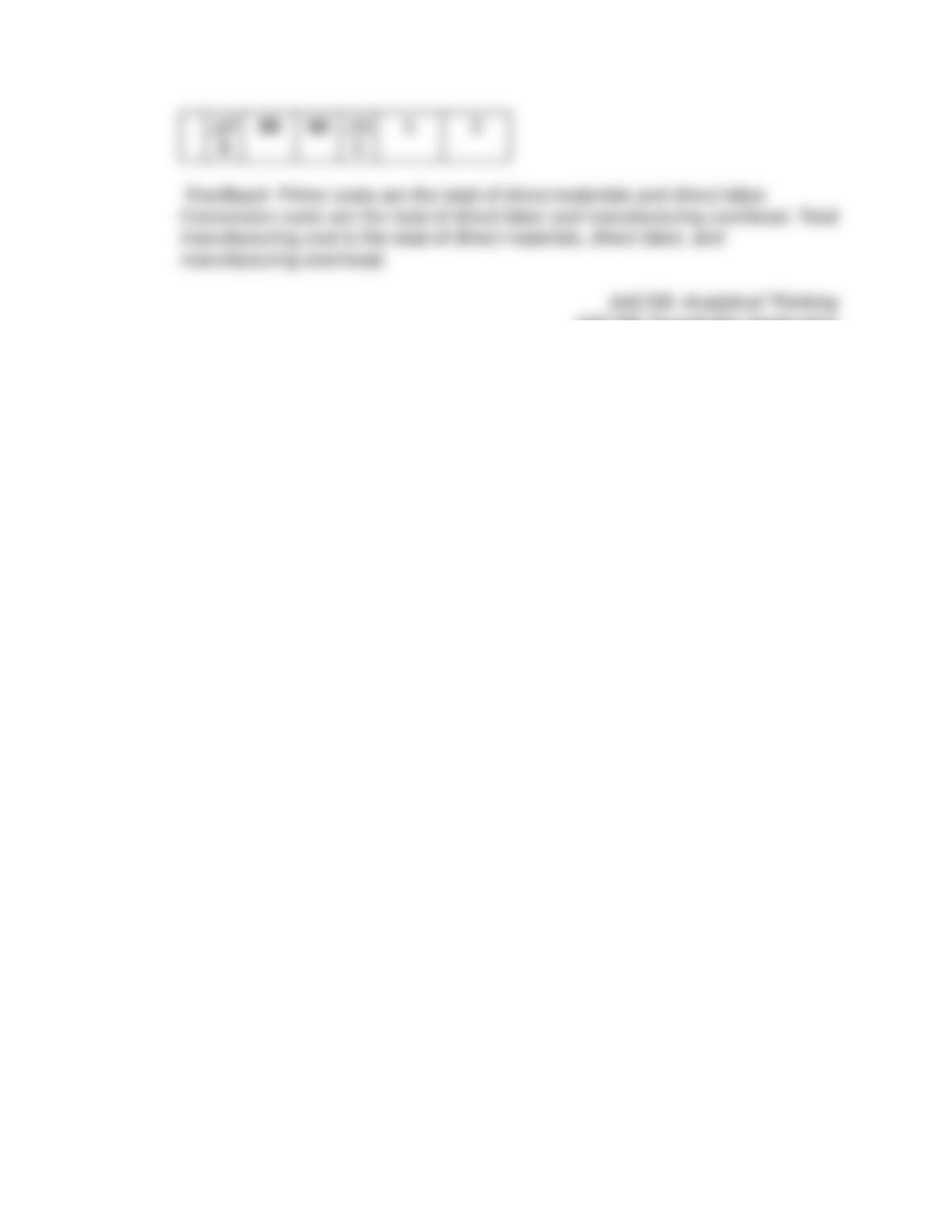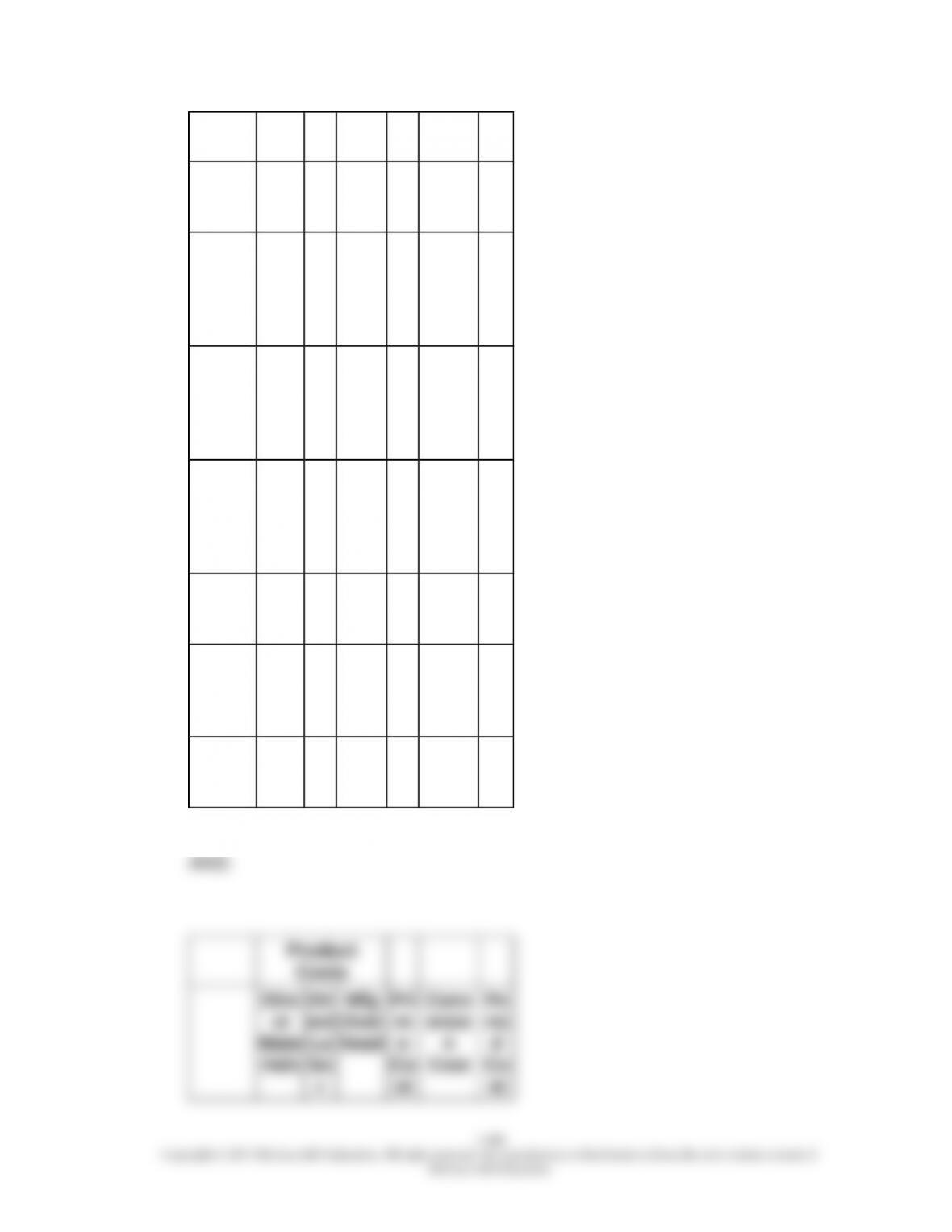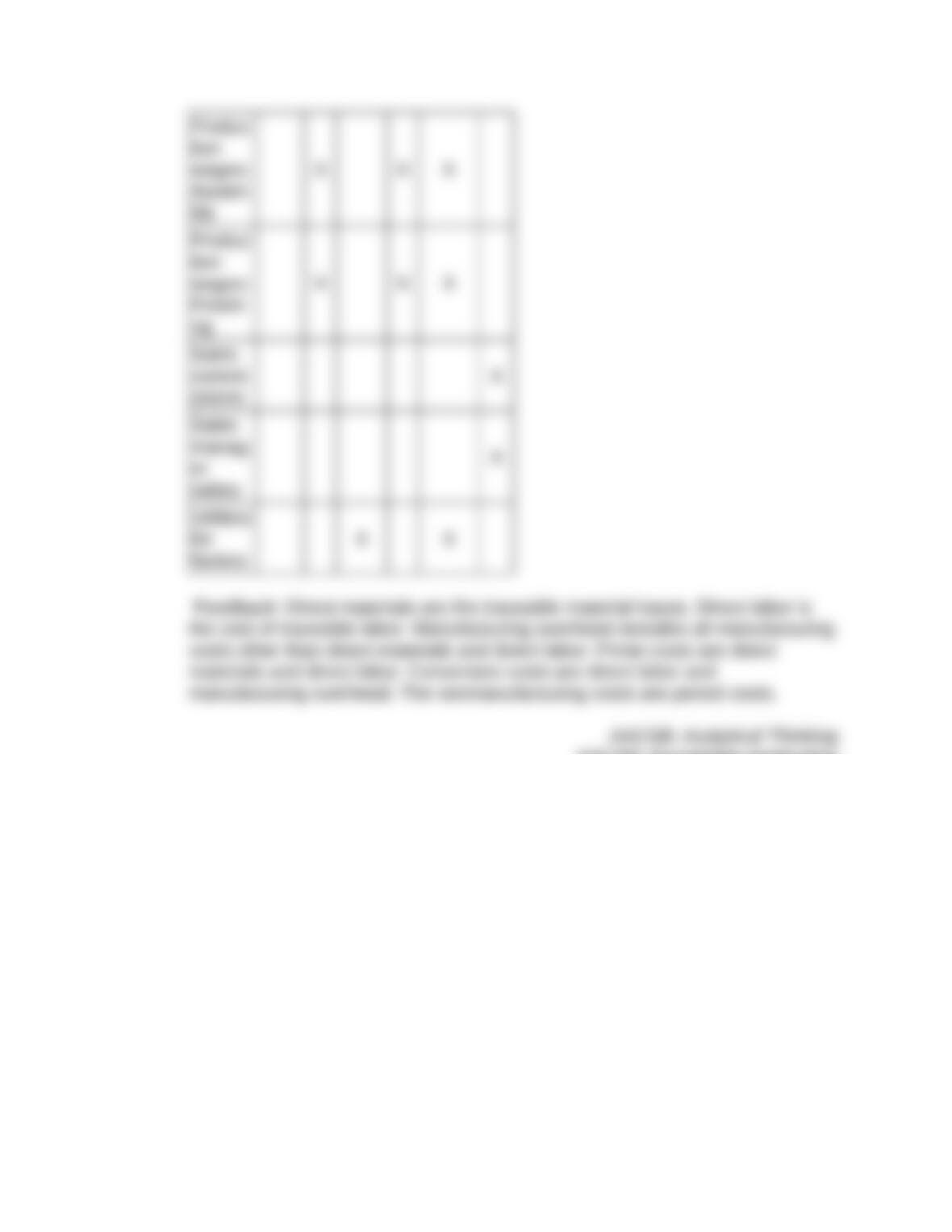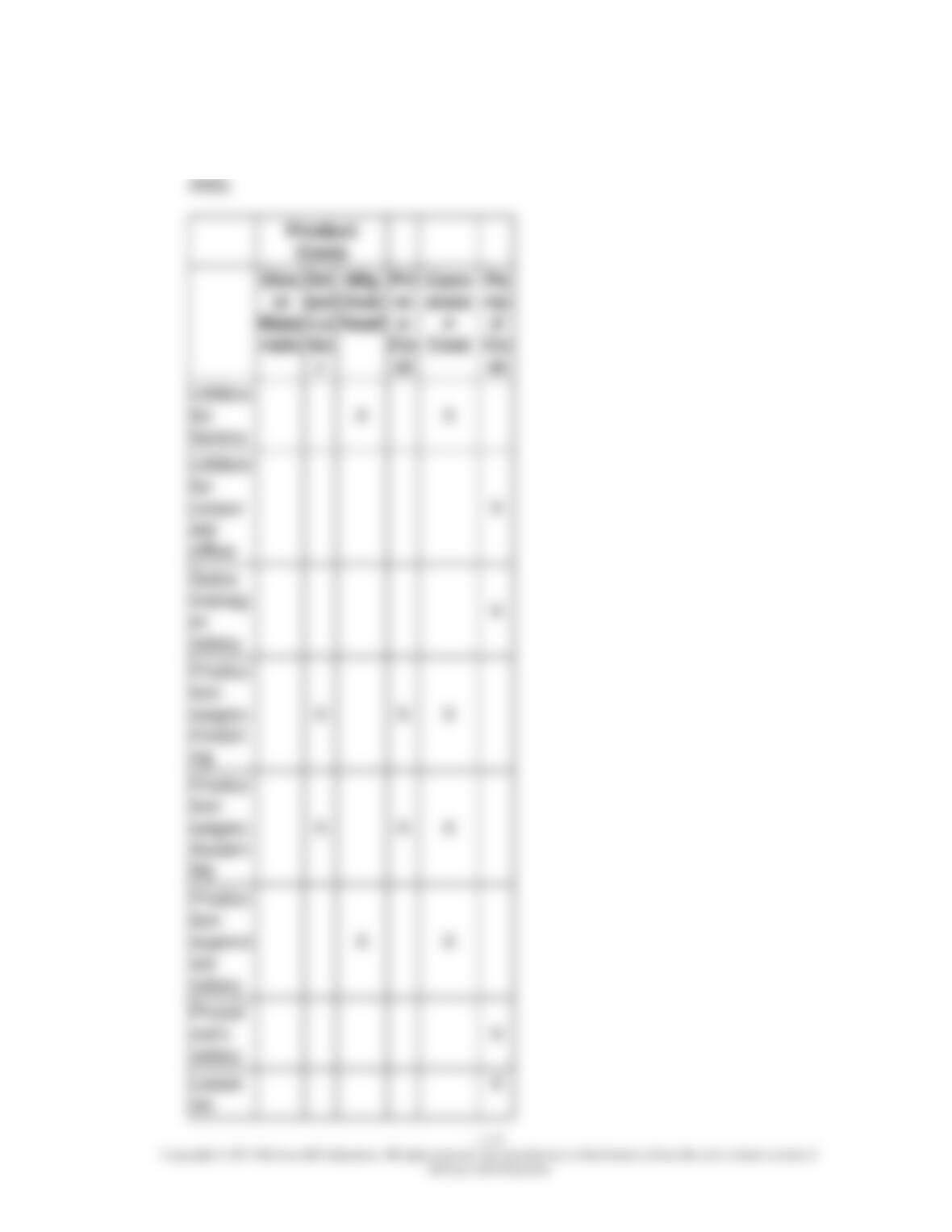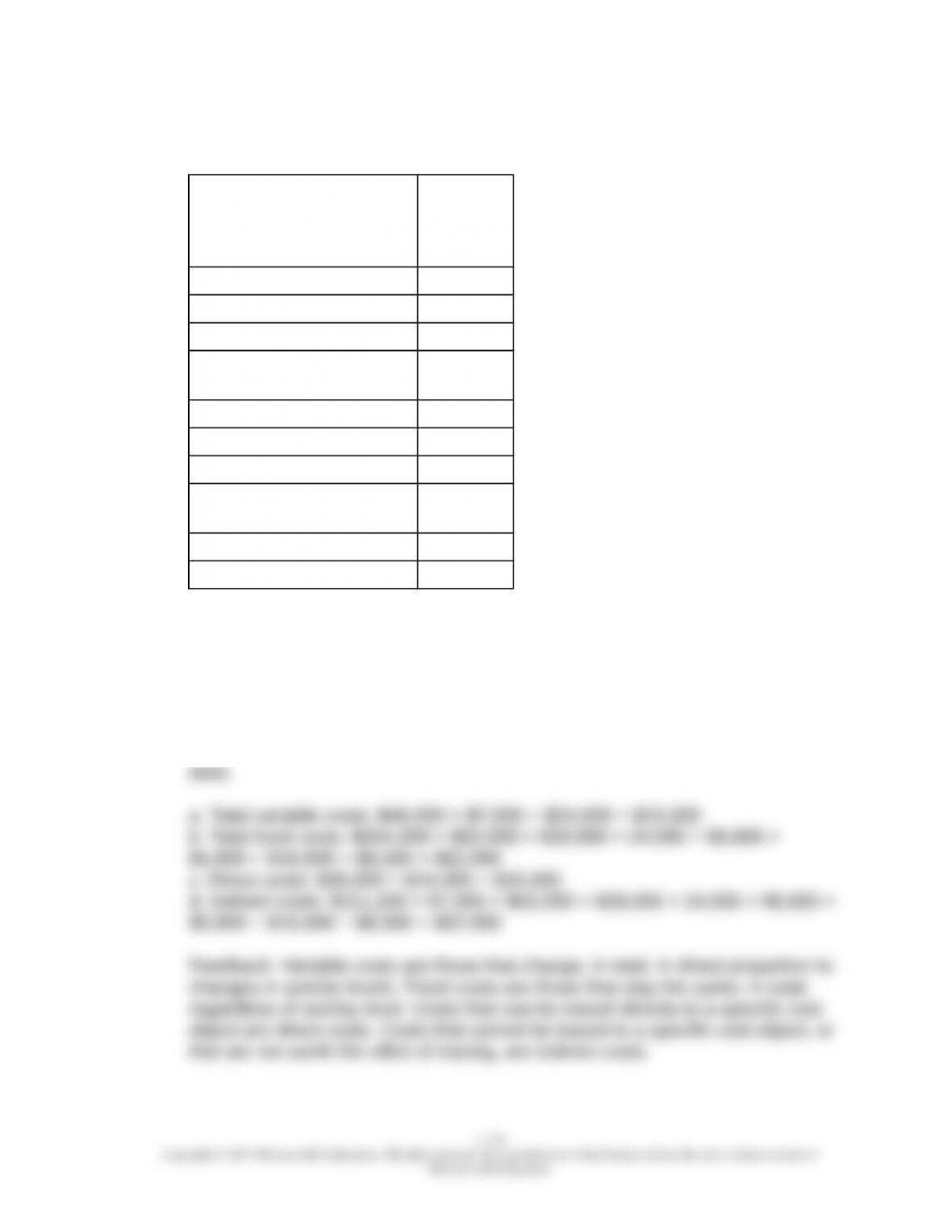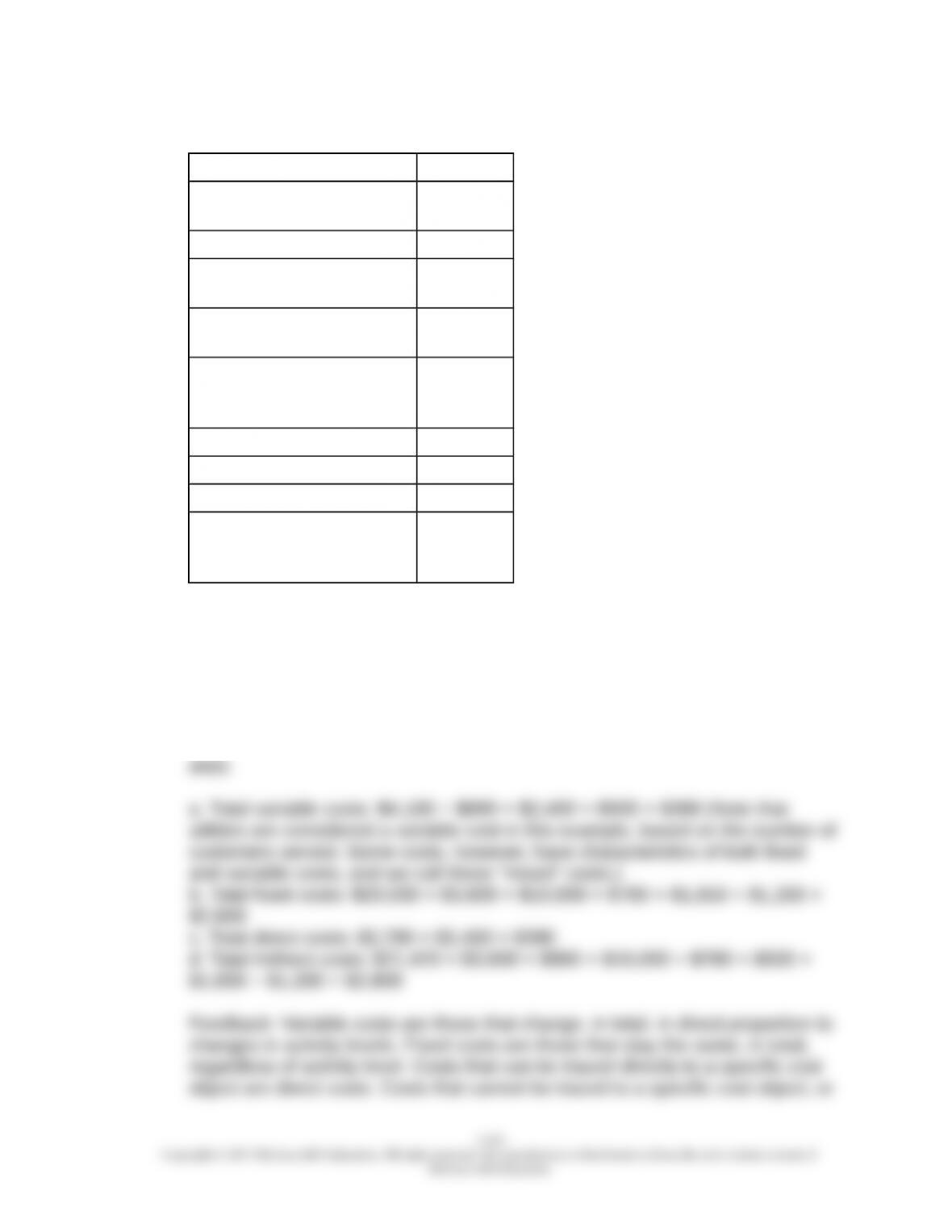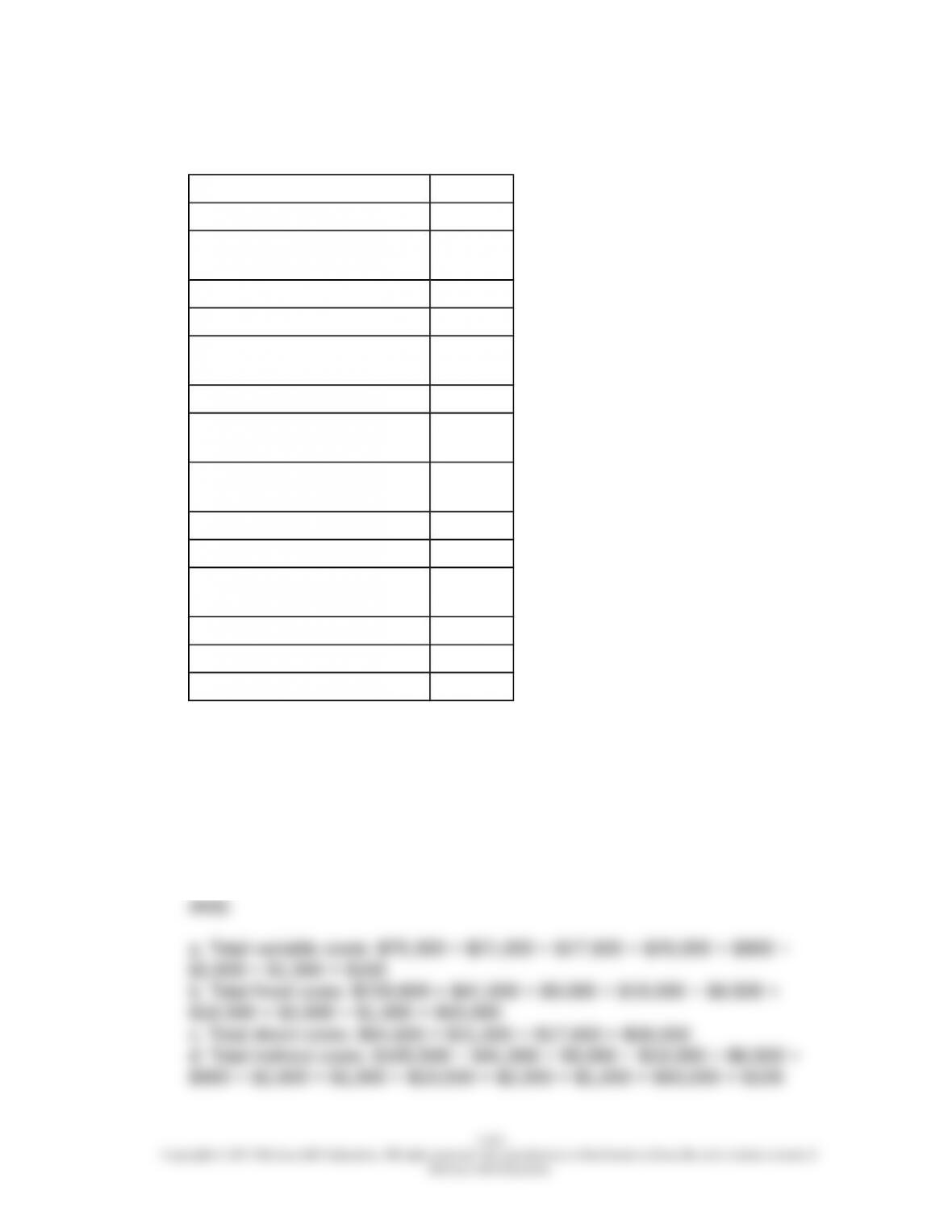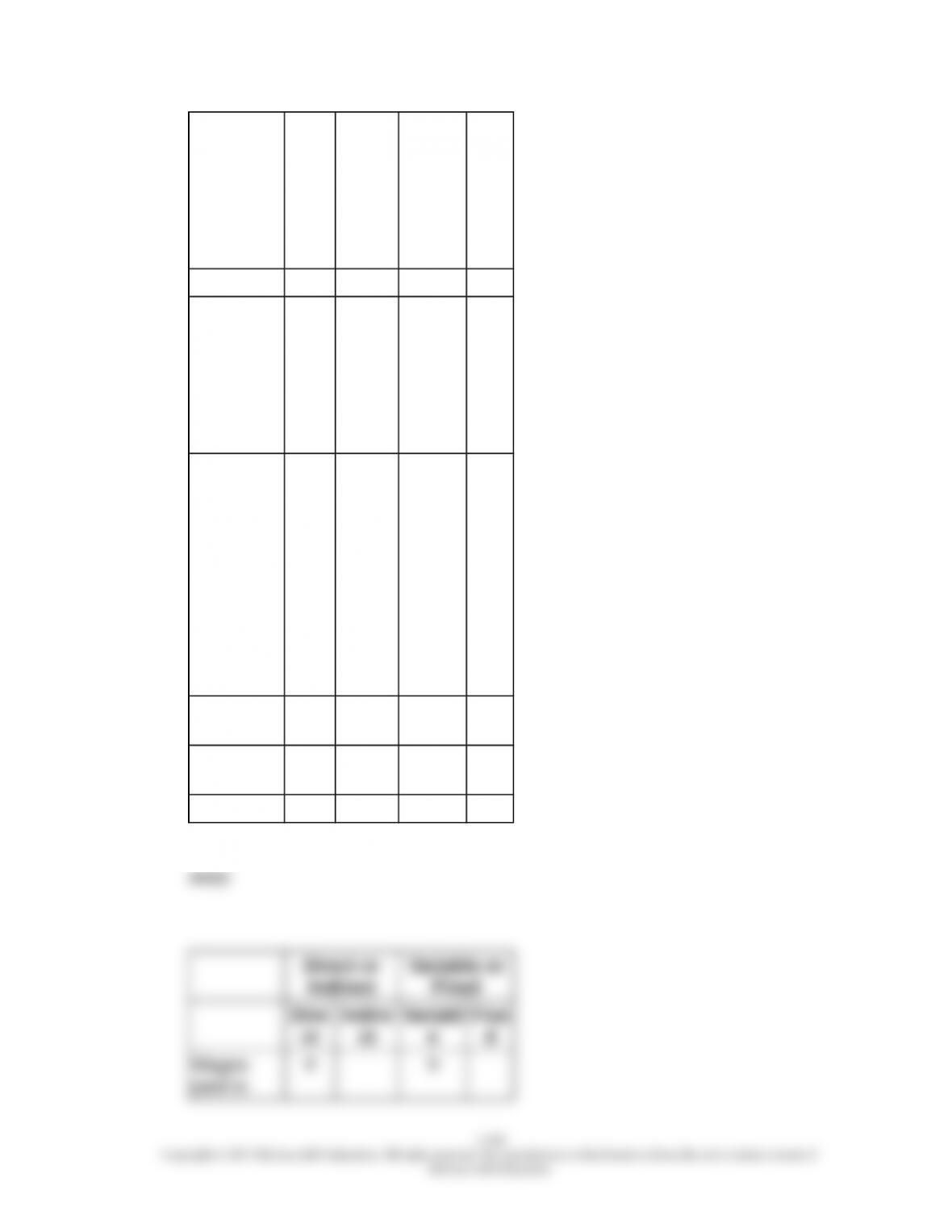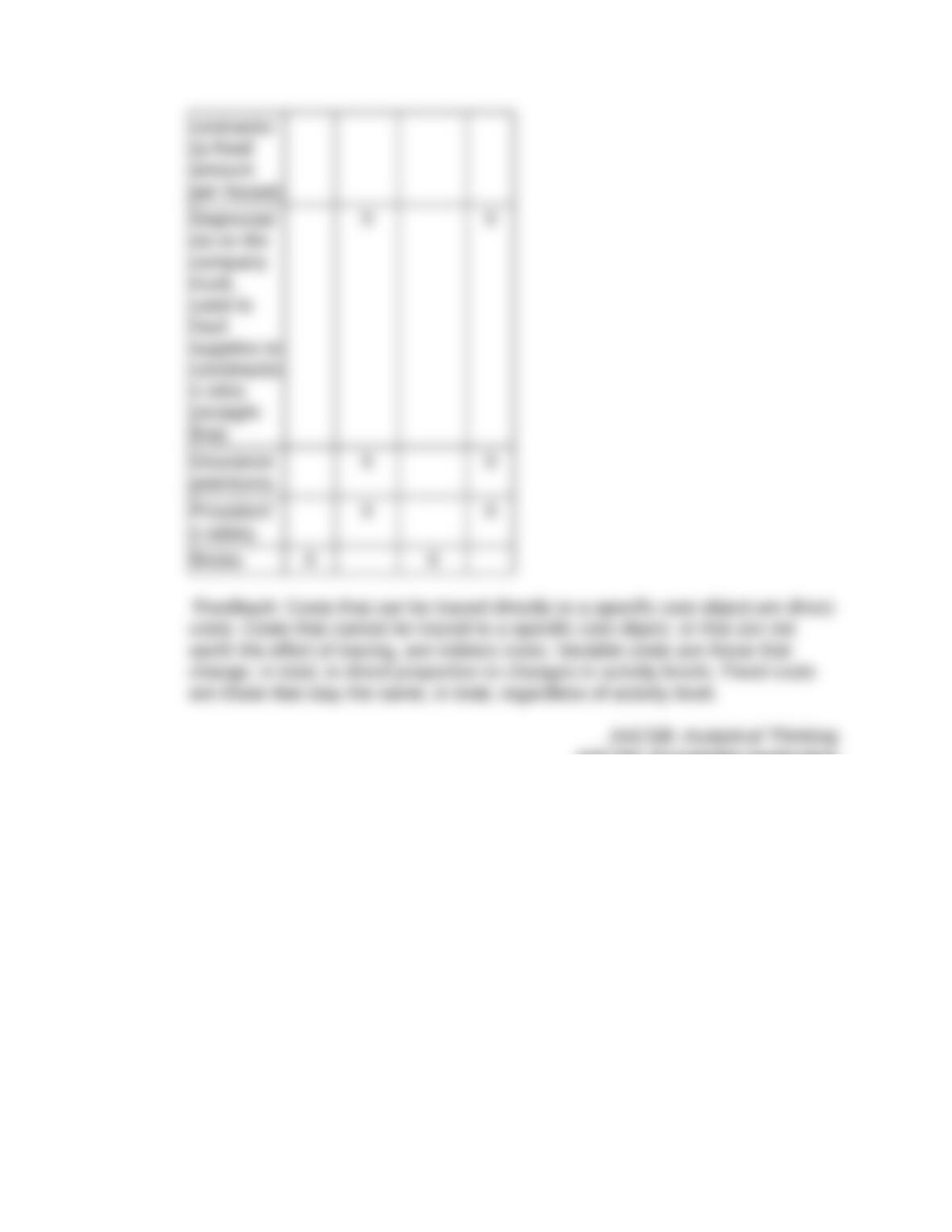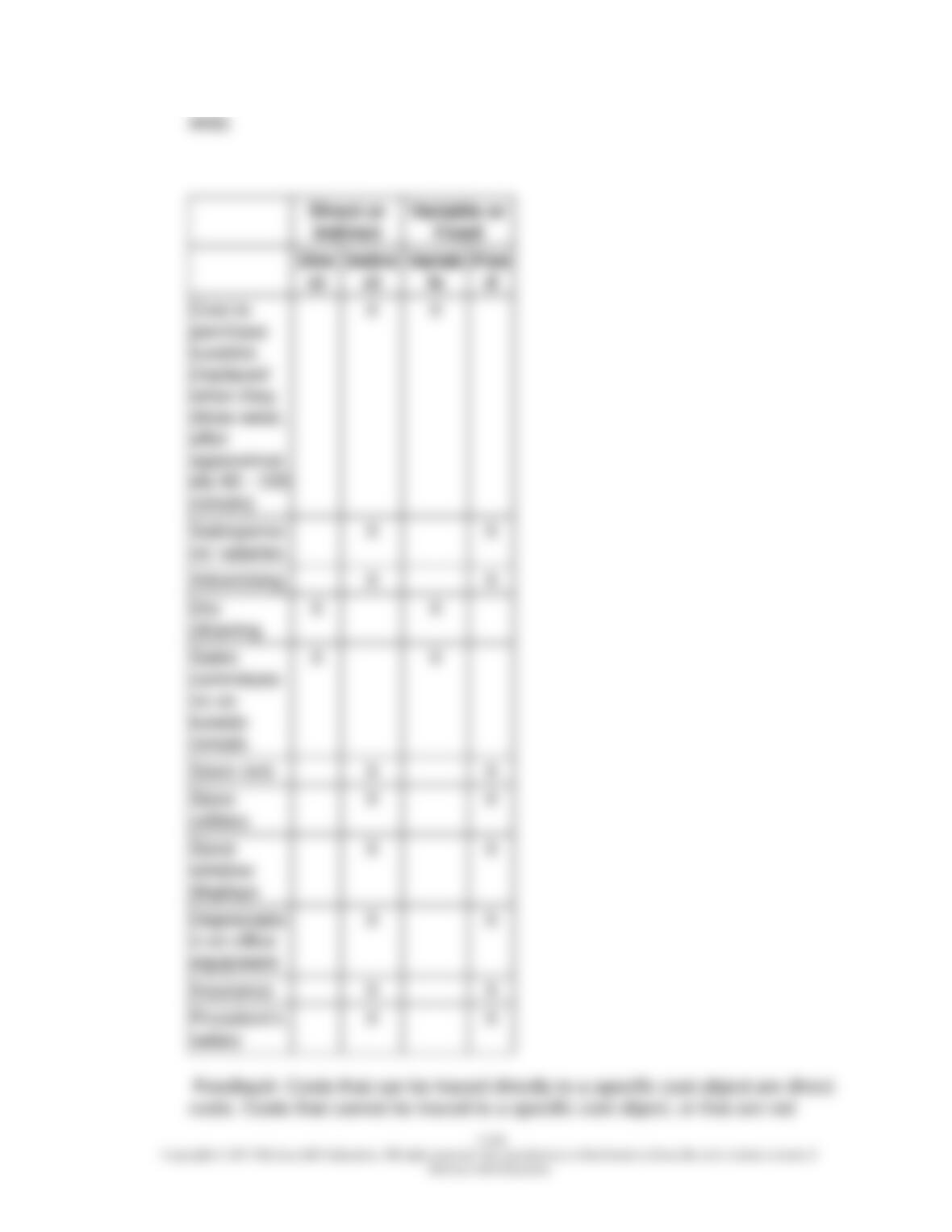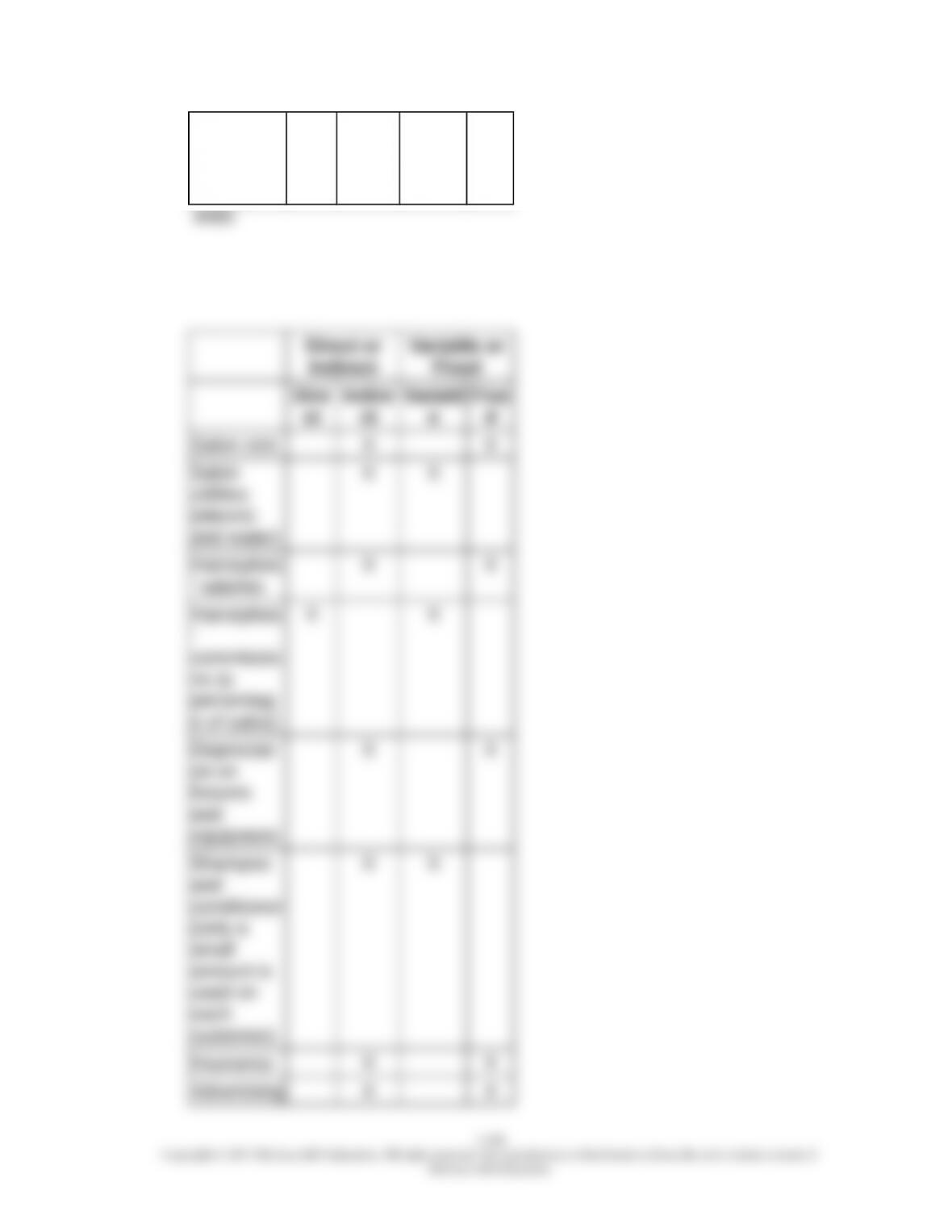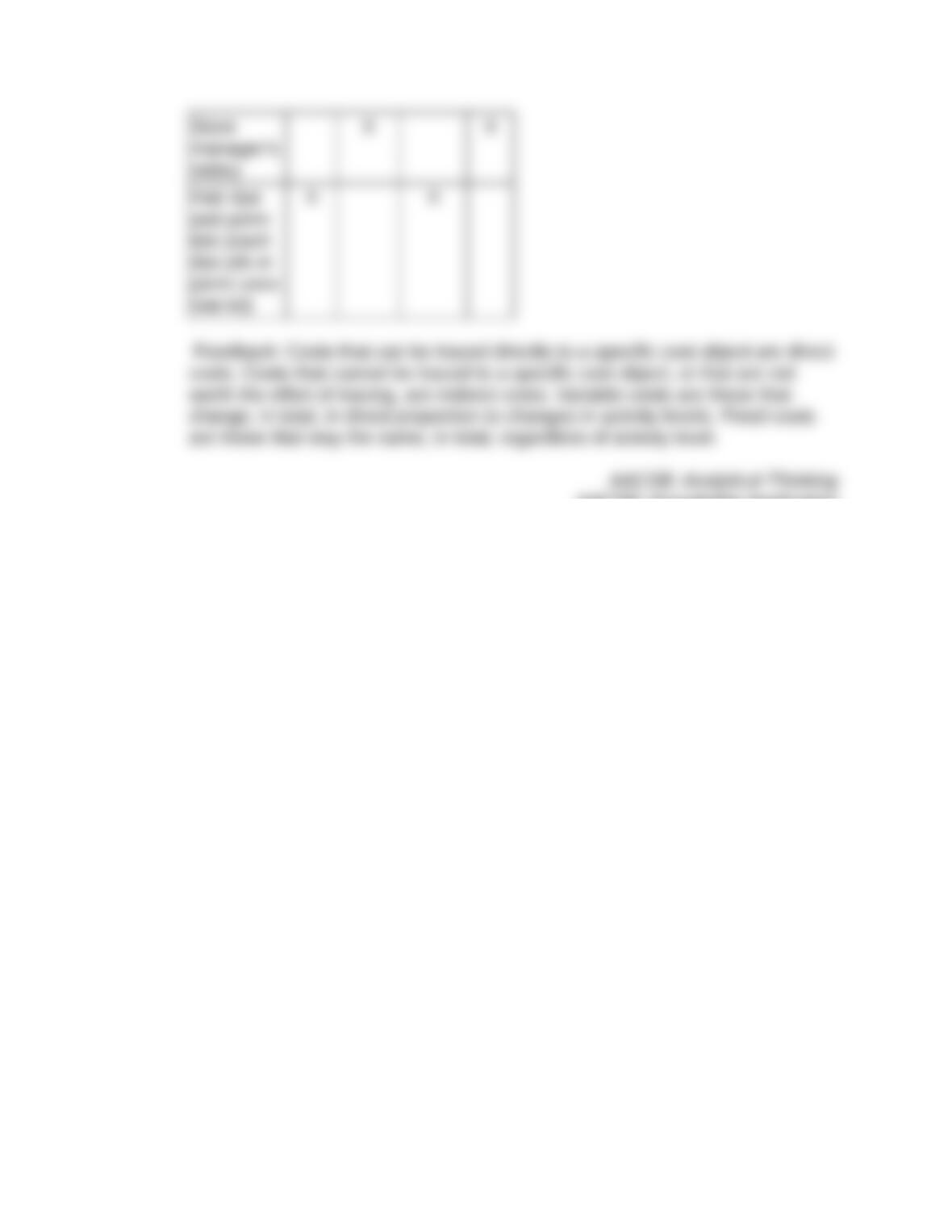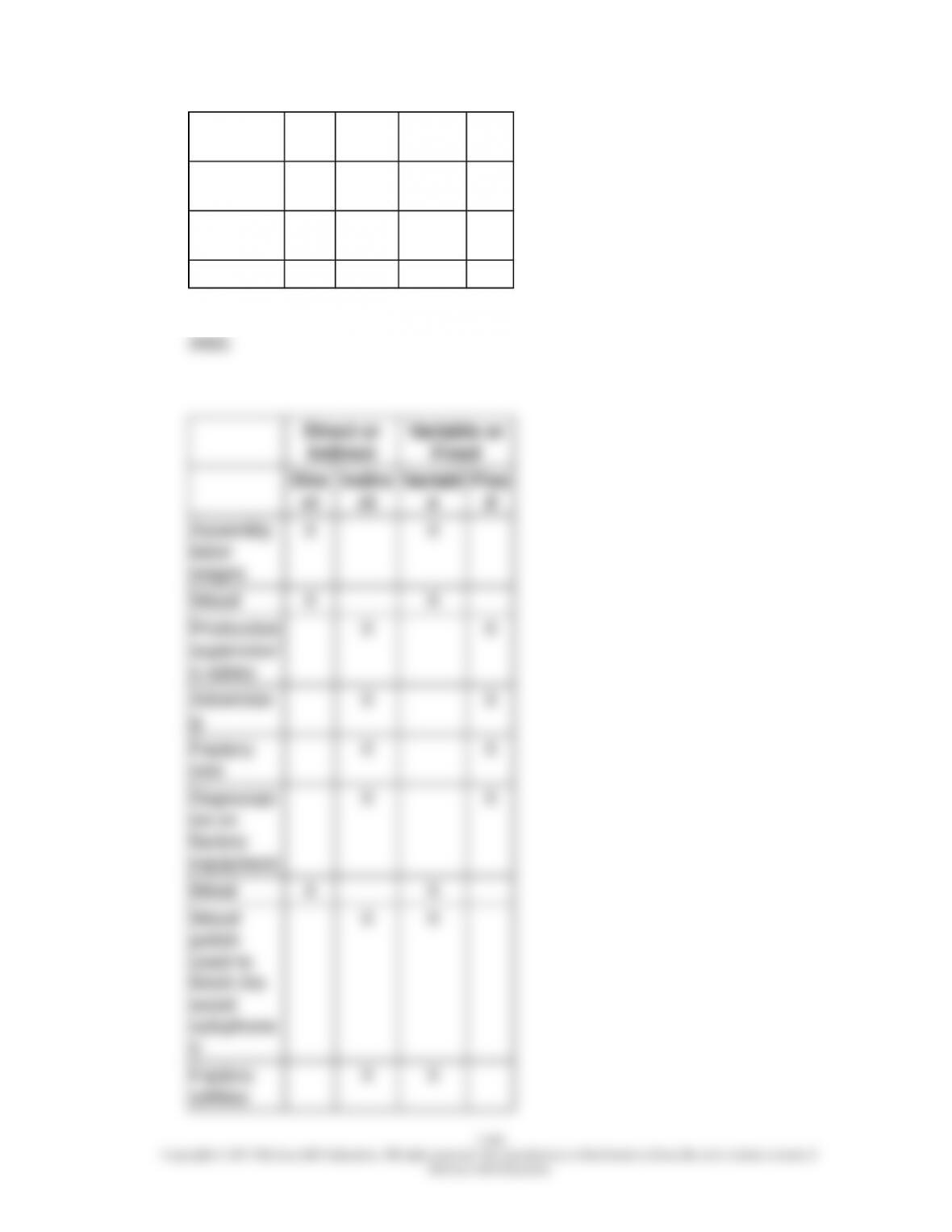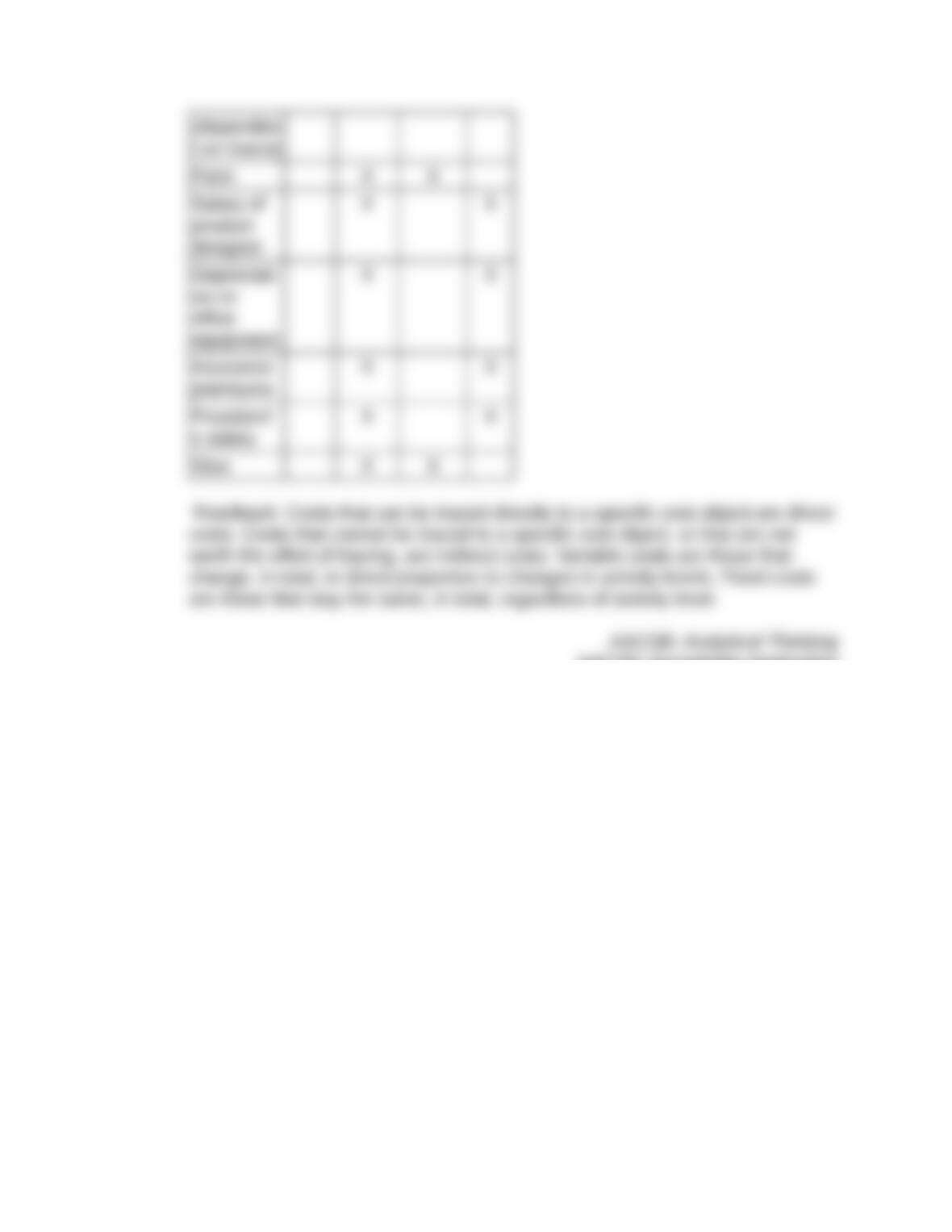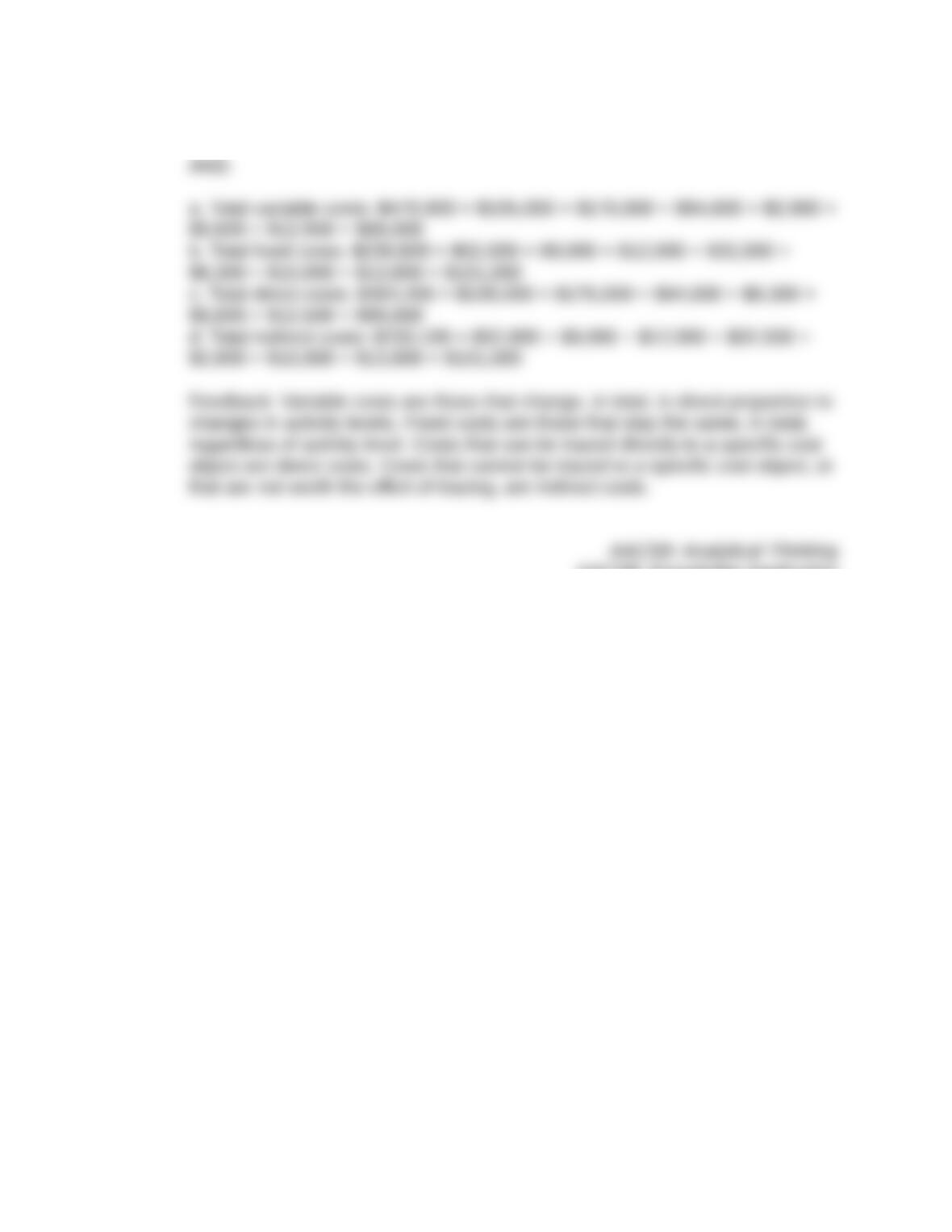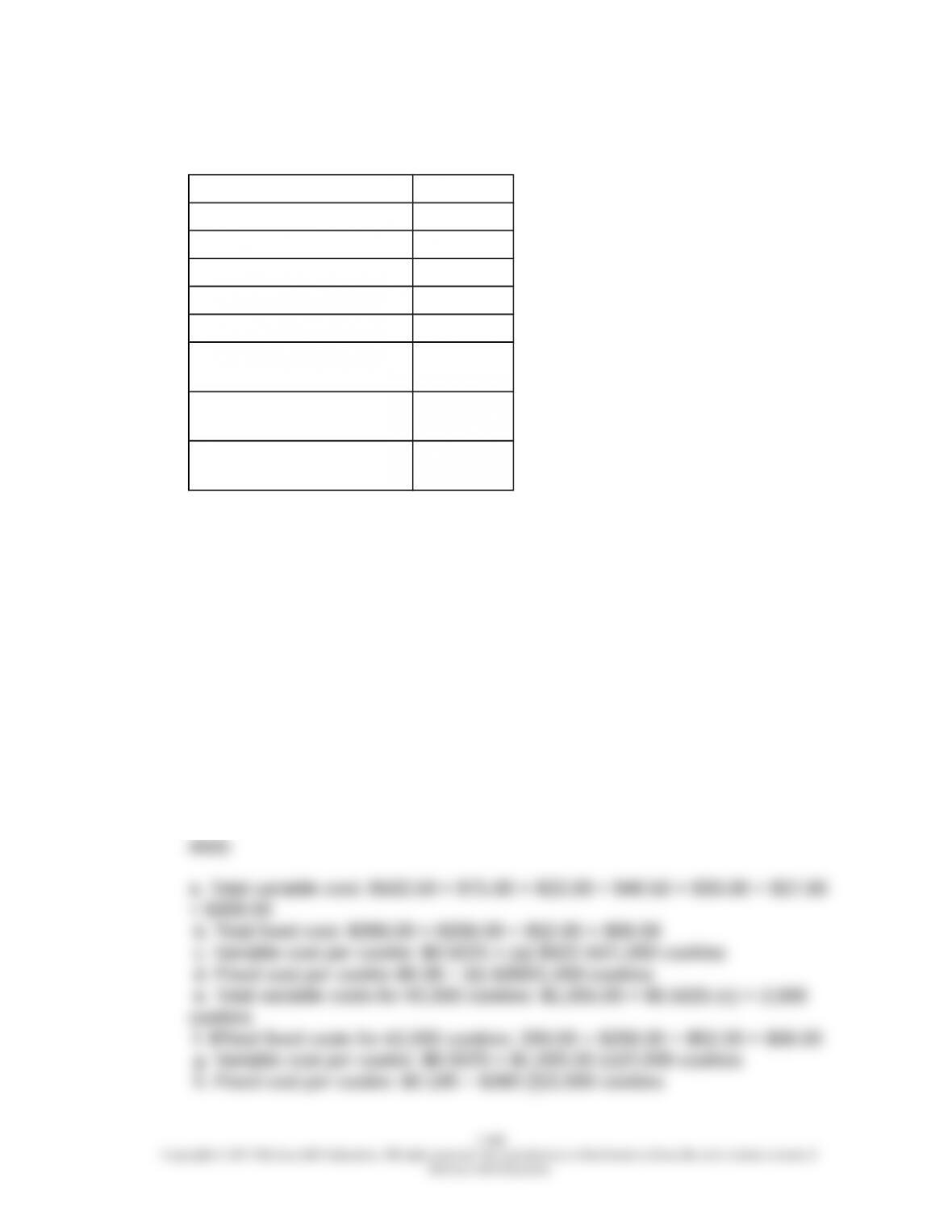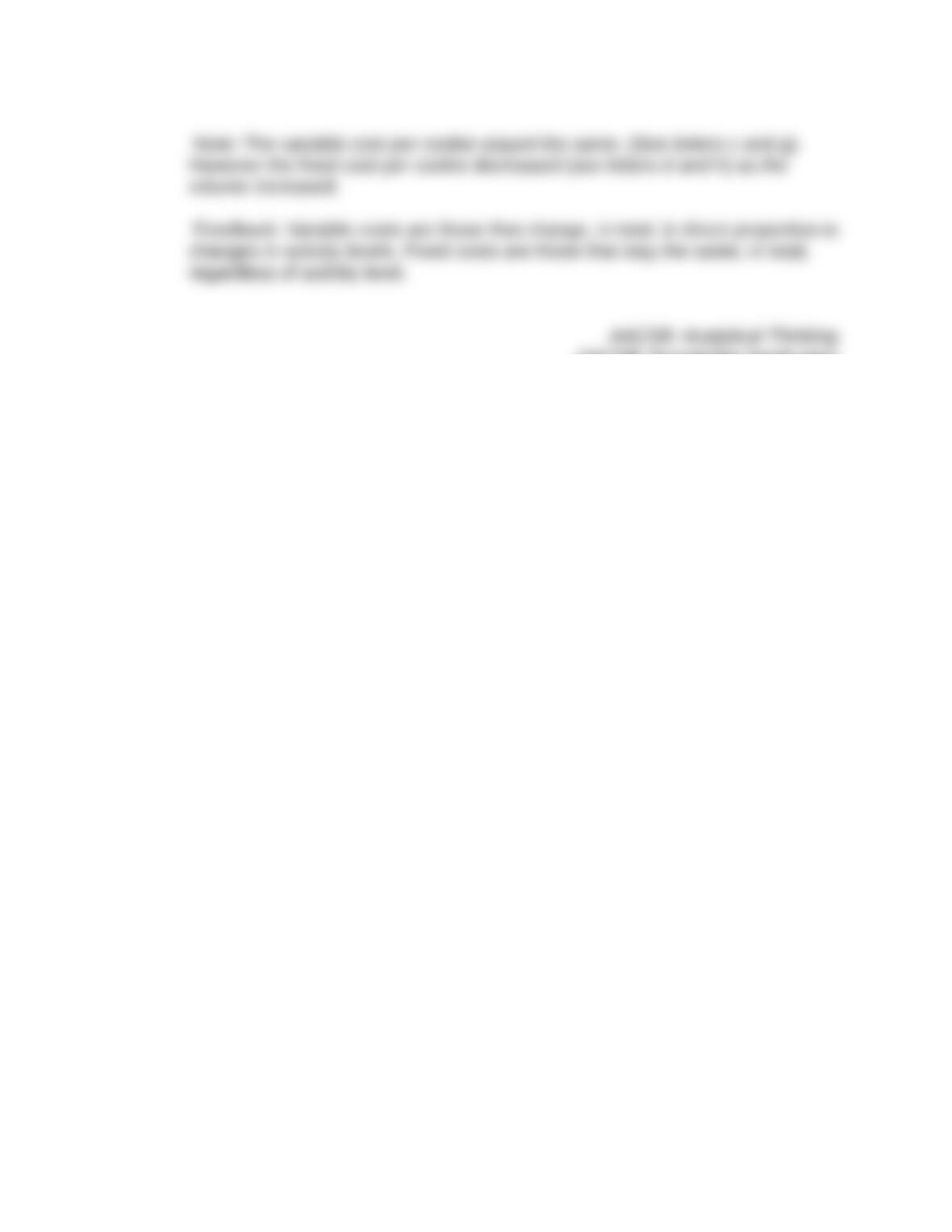Accessibility: Keyboard Navigation
Blooms: Understand
Difficulty: 2 Medium
Learning Objective: 01-04 Define and give examples of different types of cost: Out-
of-pocket or opportunity costs, Direct or indirect costs, Variable or fixed costs,
Manufacturing or nonmanufacturing costs, Product or period costs, Relevant or
irrelevant costs.
Topic: Relevant versus irrelevant costs
87. For a cost to be relevant, it must meet which of the following criteria?
A. It must not differ between the decision alternatives and it must be incurred
in the future rather than in the past.
the future rather than in the past.
C. It must not differ between the decision alternatives and it must have
occurred in the past rather than in the future.
D. It must differ between the decision alternatives and it must have occurred in
the past rather than in the future.
AICPA: FN Decision Making
Accessibility: Keyboard Navigation
Blooms: Understand
Difficulty: 2 Medium
Learning Objective: 01-04 Define and give examples of different types of cost: Out-
of-pocket or opportunity costs, Direct or indirect costs, Variable or fixed costs,
Manufacturing or nonmanufacturing costs, Product or period costs, Relevant or
irrelevant costs.
Topic: Relevant versus irrelevant costs
1-59
Copyright © 2017 McGraw-Hill Education. All rights reserved. No reproduction or distribution without the prior written consent of
McGraw-Hill Education.























































































